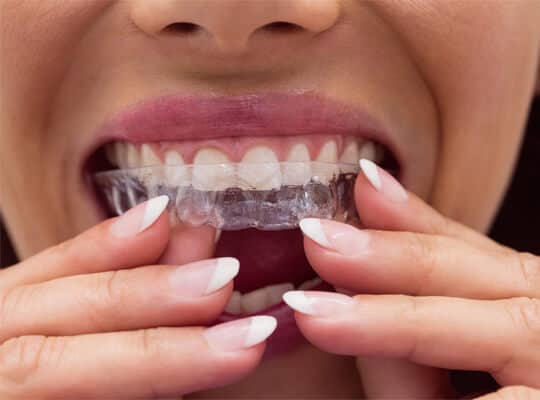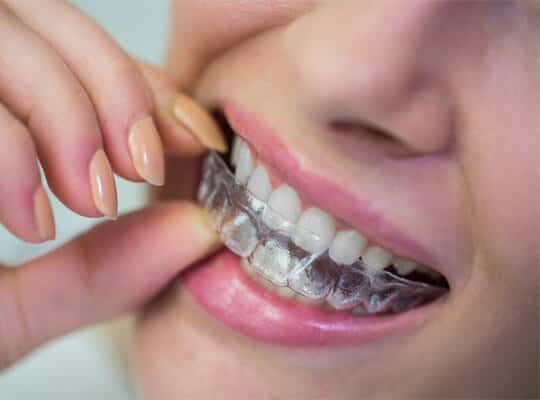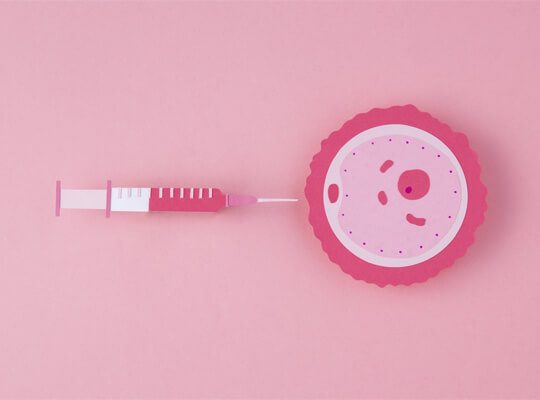Invisalign
Table of Contents
With the most recent technology, North Cyprus offers invisalign which is currently very popular. This technique, which will treat your teeth without you even realizing it, is with you to achieve the ideal of the flawless appearance.
What is Invisalign?
The orthodontic technology applied for the alignment problems of the teeth with personalized transparent plaques is called Invisalign treatment. It has many advantages in that it can be removed after actions such as eating and drinking, it is not visible in the mouth, and no wire is used during the application. For the aligners used in the treatment planning made according to the positions of the teeth, an average of 0.05 mm movement stages are created. After the aligners used for the application are inserted into the mouth for 15 days, the patients are transferred to the plaque stage. Invisalign treatment is an advantageous application, especially since it can be easily removed on special occasions such as weddings, business meetings, cocktails, invitations, graduations.
What types of dental issues can Invisalign correct?
The main dental problems that can be repaired with Invisalign treatment are as follows;
- Crooked teeth: It eliminates the order problems in the teeth and gives an aesthetic appearance to the smile.
- Overjet: In this problem, also known as over biting, there is a movement over the lower front teeth due to the larger upper front teeth. This condition, which causes corrosion on the lower teeth, is treated with Invisalign.
- Underbite: As the lower anterior teeth are larger than the upper anterior teeth, the teeth overlap in the act of closing the mouth. This causes jaw and joint pain. Invisalign can also be preferred for this type of problem.
- Open bite: It is a treatment that can be preferred because the upper and lower teeth do not merge in the act of closing the mouth.
- Cross bite: It can be applied to keep some of the upper teeth inside the lower teeth when the mouth is closed.
- Spaced teeth: It is applied when there are two or more spaces between teeth.
- Crowded teeth: It is applied in cases where more than one tooth problem (tooth overlapping, bending, pushing in front of neighbouring teeth, etc.) occurs.
What’s involved with wearing them?
In the first step of the application, where a 3D image of the mouth and jaw is created by an orthodontist, a plan is used. Special plastic aligners created for this plan are used. Then, the teeth are replaced or moved by applying pressure. Aligners need to be worn for 20 to 22 hours. How effective are these aligners? Invisalign offers a more aesthetic and comfortable treatment for mild and moderate alignment problems without the need for traditional braces.
What can affect how well Invisalign works?
In order to benefit from the treatment efficiently, it is recommended to wear the plates for an average of 20 to 22 hours. It can be removed when eating and drinking, brushing teeth, flossing or cleaning aligners. The aligners should not be cleaned using very hot water. Otherwise, the plastic may deteriorate. The working efficiency of Invisalign may differ depending on the intensity of the orthodontic problem. According to studies, factors such as age and gender can also negatively affect tooth movement. For this reason, how well the treatment will result may vary according to such factors.

Who is a good candidate for Invisalign?
To understand whether you are a suitable candidate for Invisalign, the following dental problems are considered;
- Biting and crowding problems in the teeth,
- Not feeling any discomfort due to long-term use of the aligners,
- Having enough time to clean the aligners.
What is Invisalign made from?
Aligners are made from a flexible plastic. Also known as thermoplastic, this plastic material is polyurethane / copolyester.
Invisalign process
Invisalign application consists of 6 basic steps;
- Determination of the suitability of the candidate for Invisalign by an orthodontist,
- Creation of a treatment plan by an orthodontist,
- Delivery of the aligners to the relevant clinic,
- Putting the aligners in the mouth,
- Making the final adjustments according to the need,
- Around the jawbones according to the new tooth placement attaching a stabilizer to create solidification.
How long does take procedure?
Although the average duration of the application varies from person to person, a period of 12 to 18 months is largely the avarage. It can be said that this period is affected by factors such as the age of the patient, the general condition of his teeth, and the necessary care.
How does Invisalign feel?
As with traditional braces treatments, a certain amount of time is needed to get used to Invisalign aligners. A certain amount of pain may be felt, especially due to the pressure of plaques on the teeth. However, the pain subsides within a few days. The process of accustoming the plaques to the mouth can sometimes cause irritation in the soft tissue. After a certain period of time, hardening occurs in the gums and cheek area, and the discomfort caused by plaques ends. It is usually possible to reach ideal comfort after a week or two.

How long will treatment take?
The time for recovery in treatment is 15 to 20 sessions on average. However, this period varies from person to person. In some patients, a process ranging from 20 to 30 sessions may be needed for the treatment to give results.
Benefits of Invisalign
The benefits of using Invisalign can be listed as follows;
- By removing the Invisalign aligners you can drink and eat anything that you cannot in traditional dental practice.
- It is an application that meets your aesthetic expectations in terms of not being visible in the mouth.
- Stains may occur on the teeth when using braces. Oral hygiene can be done very practically with Invisalign.
- It is a convenient and comfortable application.
- It shortens the time you spend for orthodontic treatment.
- You have the advantage of being able to remove your aligners on your special days.
Aftercare
The recommended steps for post-Invisalign care are as follows;
- The aligners must be removed when brushing teeth and eating.
- Aligners should not be used after flossing or brushing after food consumption. Otherwise, any residue formed in the tooth may settle in the slits of the aligners.
- Before removing the aligners, they should be rinsed and ready for reuse.
For More Information
Please do not hesitate to contact us for more information on the subject.



